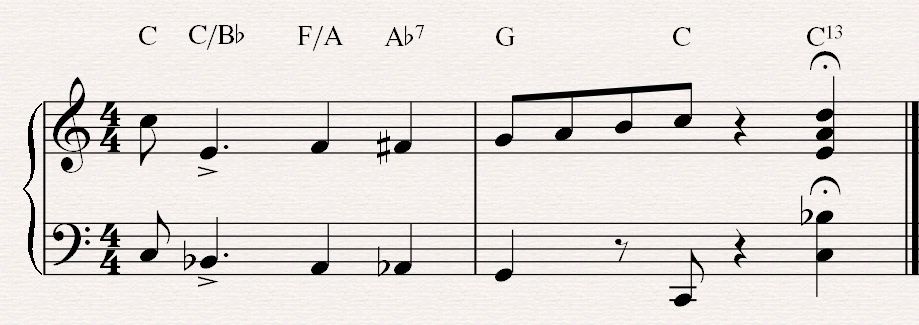Here it is (in its most basic form), with some approximations of chord symbols above the staves:
 |
| Key of C Major. (click to enlarge) |
The ending's coolness, I think, is a result of its simplicity (and its smooth contrary motion).
With some inferential chord labeling, you end up with strong structural chords (I, IV, and V). There's even a bit of augmented sixth chord action in there! (The Ab7 can be analyzed as a German chord, which I wrote about in this earlier post.)
The final fermata chord is somewhat variable, and it's where you can have fun adding in more interesting colors (my go-to is the #11 extension). Even the chord-quality can be modified, if you so desire (e.g. playing a C major-seventh chord rather than a C dominant-seventh chord).
This two-bar ending is a great thing to memorize and learn in all 12 keys, as it is very commonly used to end songs other than 'A' Train itself. (If someone instructs you to end a tune with the 'A' Train ending, this is what they're referring to.)
And that's about it... Have fun with the "caboose"!

No comments:
Post a Comment